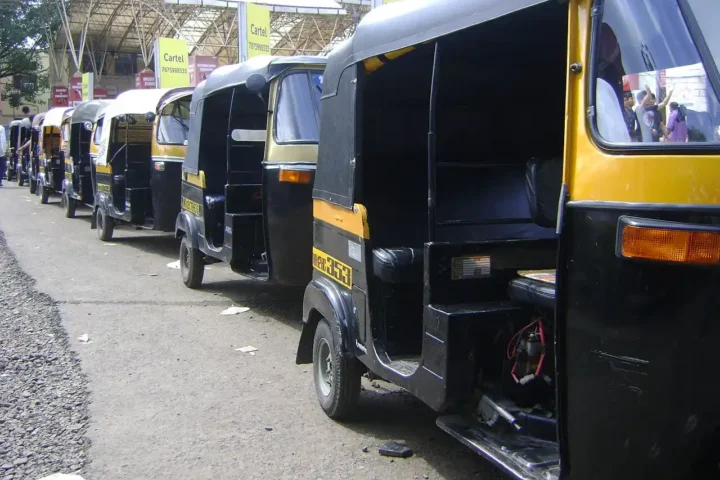A wave of new laws across the US is putting the brakes on dangerous drivers by bringing speed-limiting technology to American roads. Following a tragic crash in Washington state, lawmakers are turning to Intelligent Speed Assistance (ISA) devices as a fresh approach to combat extreme speeding.
The Crash That Changed Everything
In March 2024, 19-year-old Chase Daniel Jones, who had previously admitted to being “addicted to speed” and wrecked two cars, struck a minivan at 112 mph in Renton, Washington. The crash killed driver Andrea Hudson (38) and three children while critically injuring Hudson’s two other children.
During sentencing, the judge made an unprecedented decision: any future vehicle driven by Jones must be equipped with an ISA device to prevent high-speed driving, a condition that would remain during his probation after release.
States Taking Action
Virginia led the charge in February 2025 by passing HB 2096, which will take effect on July 1, 2026. The law establishes an Intelligent Speed Assistance Program under the Virginia Alcohol Safety Action Program, allowing courts to require ISA installation for drivers convicted of reckless driving at speeds over 100 mph.
The devices must limit vehicles to 10 mph above posted speed limits using GPS technology. Tampering with the device or driving an unequipped car will be a Class 1 misdemeanor, punishable by up to 12 months in jail and a $2,500 fine. Courts can waive installation and monitoring fees for low-income defendants.
Washington, D.C., followed with its STEER Amendment Act (D.C. Law 25-161), allowing the DMV to enroll aggravated reckless driving offenders in a one- to three-year ISA program as a condition for license reinstatement. Participants must install GPS-based speed limiters on all vehicles they own, with financial assistance available for those who need it.
Washington State’s BEAM Act (HB 1596) defines “excessive speeding” as 10+ mph over the limit in urban zones or 20+ mph over the limit elsewhere. The law requires a 150-day probation with ISA installation for such offenses. These devices include an override button limited to three uses monthly, with strict privacy rules limiting data sharing to court orders only.
Georgia’s HB 308 (Stop Super Speeders), passed unanimously in early 2025 and awaiting the governor’s signature, would allow judges to order ISA devices that limit speeds to no more than 20% above posted limits for drivers convicted of “egregious violations” like street racing. Fee waivers for low-income drivers are included in this legislation as well (see Georgia General Assembly HB 308).
How The Technology Works
The ISA devices build on technology pioneered by companies like Smart Start (Grapevine, TX) and LifeSafer (Cincinnati, OH), which developed ignition interlocks for DUI offenders in the 1990s. Modern ISA units combine high-precision global navigation satellite systems, updated digital speed-limit maps, and accelerometer data to instantly cap throttle input at mandated speeds.
The European Union has already embraced this technology. As of July 7, 2024, all new M- and N-category vehicles sold in the EU must include speed-limit information plus either a warning system or active control function (Regulation 2019/2144). Studies from the EU report 20–30% reductions in fatal crashes where ISA warning or control systems were deployed.
Victim Advocacy Drives Change
Amy Cohen, who founded Families for Safe Streets after her 12-year-old son was killed by a speeder in Queens, NY, calls ISA “commonsense, targeted interventions” that preserve mobility while saving lives. She and the FIA Foundation have provided expert testimony and grassroots support in DC, Virginia, Georgia, and Washington State, ensuring these laws reflect survivor experiences.
The Human Cost
In 2023, U.S. traffic fatalities decreased 4.3% to 40,901 but remain above pre-pandemic levels. Speeding was cited in 29% of fatal crashes—nearly one-third—highlighting speed as a leading killer on American roads (NHTSA Speeding Data).
Research shows many drivers cited for extreme speeding continue driving on suspended licenses; conventional penalties often fail to deter this behavior, while technology-enforced limits have proven more reliably effective (see IIHS Speeding Topic).
A New Approach to Road Safety
Courts historically relied on license suspension or jail time to punish reckless driving. ISA devices represent a shift toward “governed mobility,” aligning individual accountability with real-time enforcement and offering a path back to lawful driving without endangering others.
This integration of judicial discretion, GPS technology, and advocacy from victims’ families shows how smart tech can make roads safer while still allowing people to drive for work, school, and family needs. Rather than taking licenses away entirely, these devices let courts ensure drivers follow the rules of the road and uphold road safety for everyone.



















